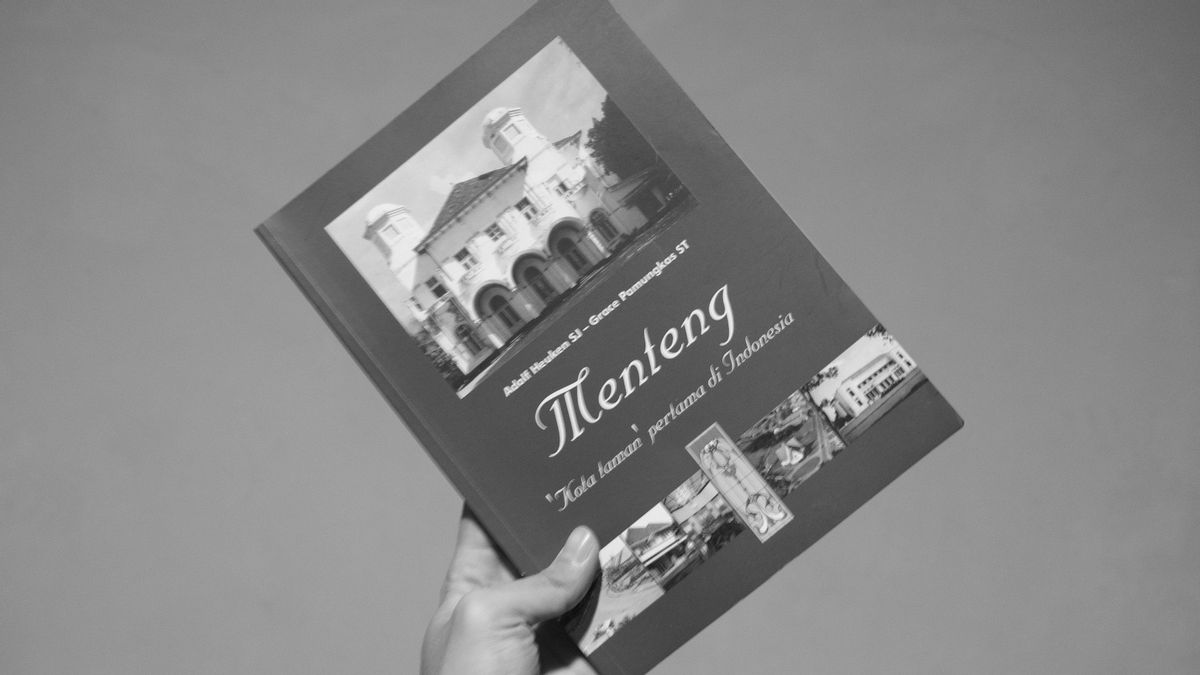JAKARTA - For a long time, Menteng has been known as an elite area in Jakarta. Not only because of its rich history, but also because Menteng is like an oasis amidst the chaotic spatial layout of Jakarta. Other old and new residential areas in Jakarta, in fact, are not as neat and grand as Menteng.
Therefore, Menteng's prestige has been maintained since then until now. The 44th President of the United States (US) Barack Obama, who once lived in Menteng, also praised him. Menteng is so special, a famous Dutch architect, HP Berlage who visited Batavia (Jakarta) in 1923, really admires this area.
For him, Menteng is an area which as a whole is interestingly integrated. His admiration increased when he saw the style of modern villa buildings that were adapted to the tropical climate. It gives him a unique impression. "I feel as if in Baarn or Hilversum," he said.
Even so, not many people know the long history of Menteng as a residential area. Most only know Menteng as an elite area. In fact, Menteng is a historical area that was once inhabited by national figures. In addition, not many people understand the development and architectural value of the existing dwellings in Menteng.
Luckily, an important figure in the writing of history in Jakarta who is also a resident of Menteng since the late 1960s, Adolf Heuken SJ compiled a book with Grace Pamungkas entitled Menteng: The History of the First Garden City in Indonesia (2001).
In this book, Adolf tries to share the results of his observations and research on the areas where he lives every day. History, developments, old buildings, about the city of Taman, to the unique building elements that exist in Menteng houses.
Menteng developmentHistorically, Menteng landowners have frequently changed hands. For example in the mid-18th century, where the Menteng land was owned by a 'Moor' (Arab), Assan Nina Daud (1755-1762). Shortly thereafter, ownership fell to J. du Chene de Vienne in 1790.
It continued again in the early 19th century, to be precise in 1815, Menteng land was owned by a man named Jakob P. Barends. And in the mid-19th century, the land of Menteng fell to a landlord of Arab descent.
However, some of the Arabs who were once landowners never actually occupied their land. They buy land generally only for investment. When land prices rise, they will sell the area.
"According to the Almanac from 1910, Menteng's private land was planted with rice, grass and coconut trees. The land was valued at 238,868 guilders with 2,301 tenants living on it. They hold minimal rights to the fields they work on, but their obligations are often heavy, ”reads on page 18.
Long story short, the real estate company De Bouwploeg bought Menteng's land covering an area of 295 Rijnlandsche roeden in 1908 by paying 238,870 guilders. The purchase was intended to make Menteng a residential area for the upper class of society at that time.
Menteng began to be developed by educated architects, many of whom were working for the first time in Batavia. So Menteng became the first modern residential area in the country.
Historic old buildingAfter discussing the long development and the architecture of houses in Menteng. Adolf then moved on instead of explaining the historical old buildings in Menteng. Some of them are present in the form of public buildings and houses.
These historic public buildings include the Kunstkring Building or the former immigration office, the Bouwploeg or Boplo Building, the Bappenas or former lodge, the telephone office which is now the Bung Karno University, and two old churches, the Saint Teresia and Paulus churches.
Meanwhile, the houses that are described in many books include, the house of the Egyptian Ambassador, the Portuguese Ambassador, the DKI Jakarta Governor's Official House, Maeda's House, and so on. Interestingly, everything is explained by Adolf, complete with the history of development, architects, and the designation of buildings from ancient times to the present.
Take the Kunstkring Building for example. “This building is located in a special position in the Menteng area, not only has a major role in the field of fine arts, but is also a distinctive work that is important for the architectural history of Jakarta and all of Indonesia. Moojen's creation opened a period of rational architecture in Indonesia based on the demands of simplicity, efficiency and truth, ”said Adolf on page 67.
Menteng as a 'Garden City'One of the elements that makes the Menteng area special is the availability of twenty small parks scattered throughout the area. On this basis, the existing gardens are often referred to as the lungs of Menteng. Where people in the morning and evening often kill time enjoying the green atmosphere in the gardens available.
Not only that, according to the character of Menteng as a garden city, the front yards of the houses were not what they are now with towering walls. This is because at that time the front yards of the houses in Menteng were not covered by high fences.
"In the early 1970s, Menteng people could still feel comfortable sitting on the front porch, which was separated from the road only by a low green fence," appears on page 112.
Therefore, the important message that the owner of the writing wants to share becomes very clear. Adolf wants readers to care about environmental preservation in Menteng as a Garden City in the middle of Jakarta. If not, the typical Menteng nuance will lose to the Jakarta Dewa named money.
Detail
Book Title: Menteng: The First Garden City in Indonesia
Author: Adolf Heuken SJ and Grace Pamungkat ST
First published: 2001
Publisher: Cipta Loka Carak
Number of Pages: 136
The English, Chinese, Japanese, Arabic, and French versions are automatically generated by the AI. So there may still be inaccuracies in translating, please always see Indonesian as our main language. (system supported by DigitalSiber.id)













